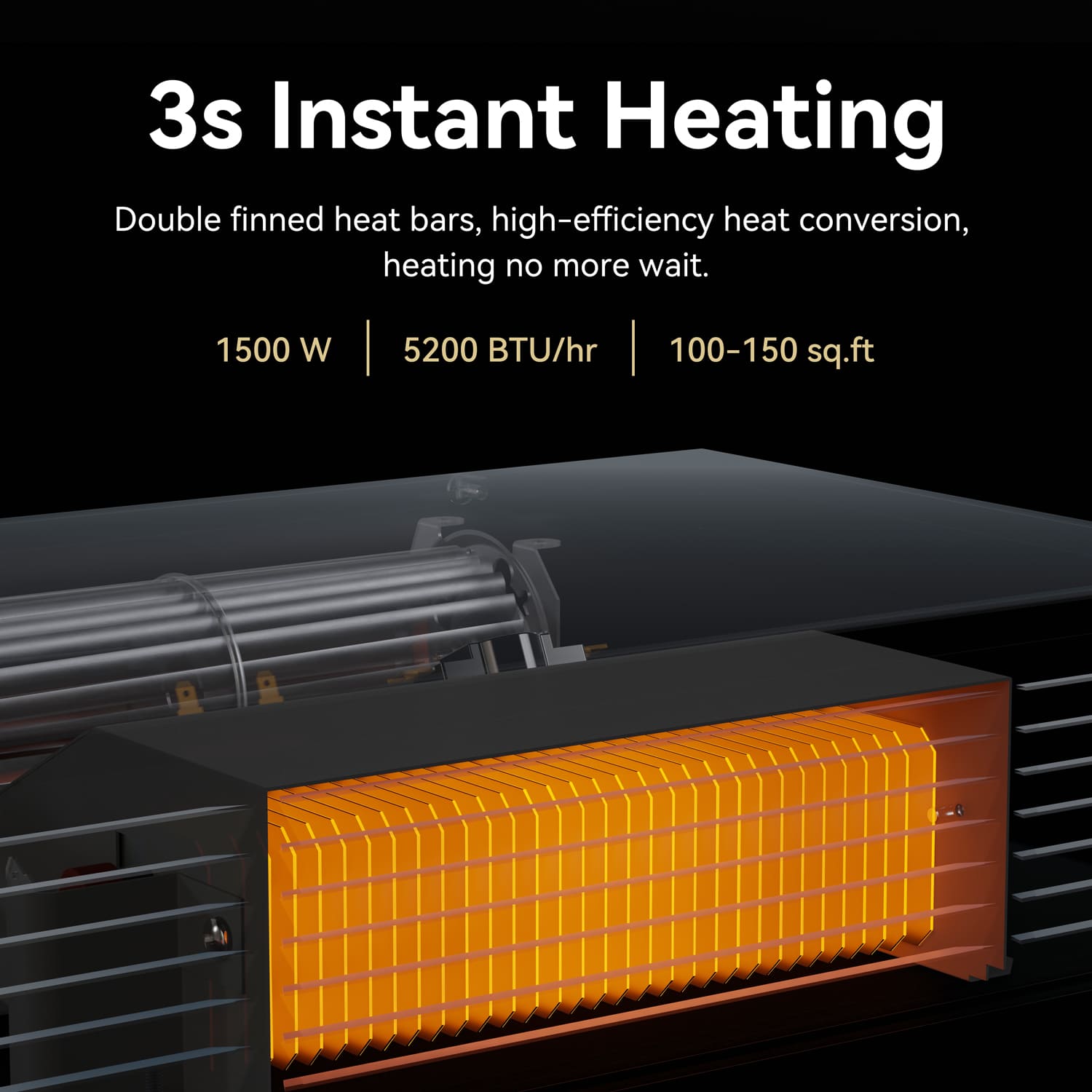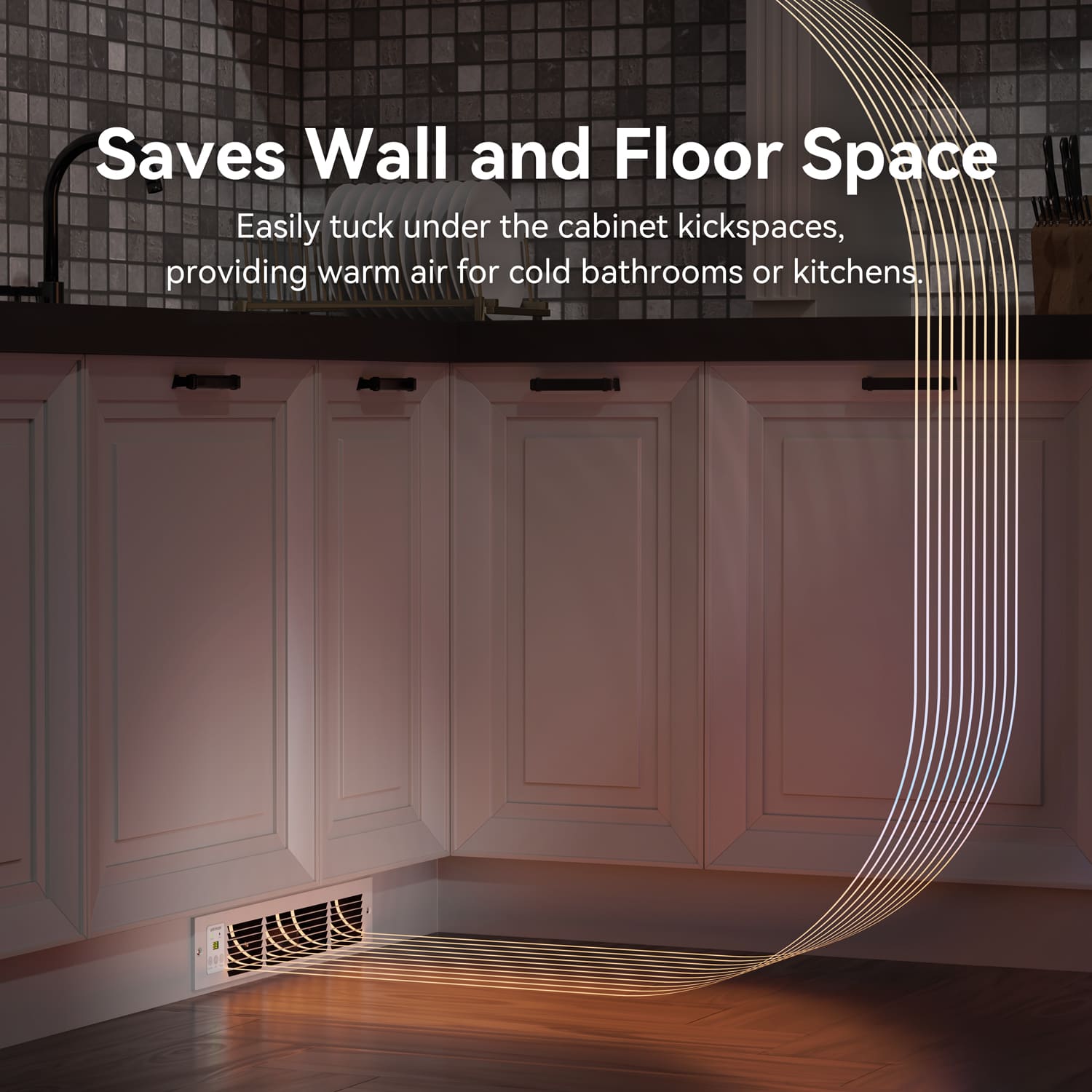





AIREPUSH kickspace heaters
Model: HTA15
Using double finned electric heating bars, efficient heat conversion, and heating without the waiting!
Project Overview
Perfect for limited-space areas and properties with either no central heating or in areas where no pipes exist. The heater automatically recognises and adapts to the voltage (120V/240V), delivers a uniform 1500W of power without any manual operation.
$299.99 $219.99
1 Year Warrenty
30 Days Return
Free Shipping

Product Detail

Where It Use for and How It Works?
AIREPUSH Kickspace Heaters use double finned electric heating bars, efficient heat conversion, and heating without the wait. Perfect for limited-space areas and properties with either no central heating or in areas where no pipes exist.


Application




Installation and Size
The starting of an air-conditioner compressor or induction motor is accompanied by:
– Inrush currents up to 7-8 times higher than running current, and
– Starting torque up to 3 times higher than running torque.


Installation and Size
The starting of an air-conditioner compressor or induction motor is accompanied by:
– Inrush currents up to 7-8 times higher than running current, and
– Starting torque up to 3 times higher than running torque.
An effective solution in the reduction of startup current
A. Compressor motors are connected in a way that lets them draw as much power as required to get up to speed quickly. Because of this design, compressor motors require a massive current surge when they start. On each motor identification plate, there is a notice called LRA. This is an abbreviation for Locked Rotor Amps and is the maximum current the motor can draw – according to the manufacturer.
During a typical start, you can expect your compressor to draw this current from the supply. RV rooftop 16000 BTU compressors are rated around 50 to 60 amps LRA. A standard 2000 watt inverter generator is appraised at 2000 watts peak which is about 16.7 amps at 120 volts AC. The generator will not start a load that draws four to five times its peak rating!
A. The main issue most every RVer faces is reducing or overcoming the initial spike to start the RV A/C. If you’ve got a motor coach, 5th wheel, big travel trailer, toy hauler that has 2 A/Cs and you’re at most campgrounds with 30-amp connection, you can only start 1 A/C because of the initial power spike to get the second A/C started. That’s a sweaty problem no one wants with only part of their vehicle cool. Or if you’re adventuring in truck campers, vans and tiny trailers, did you ever try starting your A/C with a small generator and maybe it blew a fuse or tripped a circuit breaker? Or did your small generator just stop under the heavy A/C starting spike? One RVer, was so overcome with frustration, he leaned against the closed door of his camper and silently screamed in the dark, with no power. Once is enough, right. We all learn. We go without A/C and spend another sweaty sleepless night, get a large generator, or get lucky and find one of the few 50amp campsites.
A. With the exception of my kitchen outlets and other outlets requiring high amperage, my “regular” outlets are only 15 amps? Any solutions or am I out of luck?
“Well, here’s the secret of 15 vs. 20-amp outlets. Most of them have exactly the same amount
of contact area inside. And if you look at any 15-amp plug you’ll see its contacts have exactly
the same surface area as a 20-amp plug. So if there’s a 20-amp circuit breaker and 12-gauge
wire feeding a 15-amp outlet, it’s actually rated for 20-amps of current. There’s an exception in
the code as well as UL allowing this, so don’t worry. If you’re on a 20-amp breaker with 12-
gauge wiring, then you have a 20-amp circuit, even if it’s using a NEMA 5-15 outlet.” Mike Sokol, Mr. RV Electricity
For RVers, travel trailers or truck campers who need to start their A/C using a small Honda 2200i generator, it’s an endless problem to get the A/C to start because the A/C starting surge spikes beyond the generator capacity. Every day, campers flip the A/C switch in order to chill off and it fails to start.








